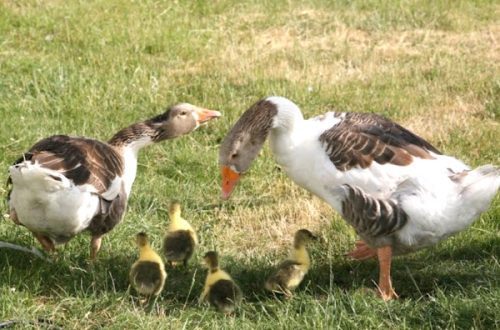
What do rabbits get sick, and how to treat them – tips
Breeding rabbits, although profitable and interesting, also implies troubles and difficulties. Rabbits are very fragile animals, and being no exception, they are very prone to get sick. Here we present to your attention the most common diseases of rabbits and tips for their treatment.
Contents
Diseases of rabbits that are dangerous to humans

What diseases in our animals should we beware of? Among them are familiar to us and not very diseases: fascioliasis, cysticercosis and pasteurellosis, scabies, worms, listeriosis, tularemia.
Despite the complexity of diagnosing, each disease has its own, different symptoms. If suddenly your pet has at least one similar symptom of those that we will write about below, be sure to seek veterinary help.
The main symptoms of diseases of eared pets that are noticeable to us:
- noticeable changes in behavior;
- confused and frequent breathing;
- drinking large amounts of water and coughing;
- increased shedding, dull and poor coat;
- pus on the mucous membranes of the eyes and nose;
- sores on the skin;
- trembling
- diarrhea;
- the appearance of fleas or lice
Video – care and prevention of diseases:
Now let’s look at each rabbit disease in more detail.
Cysticercosis

It is a parasitic disease that has similar symptoms to hepatitis and peritonitis. The same sores often occur in dogs.
The disease affects the serous integument of the brain, stomach, intestines and chest cavity, where blisters appear with a colorless liquid, but you can see such symptoms only if your pet’s body is severely damaged. The rabbit will be depressed, may refuse food, diarrhea and lethargy of the animal often appear, and later, the rabbit loses weight, the mucous membranes of the eyes turn yellow, and often, a fatal outcome occurs in less than a week.
Babies who are not even 3 months old are most susceptible to the disease. To prevent the appearance of such a sore in your two-eared friend, you can add 10% mebenvet granulate to the rabbit’s feed, and if you have to treat an already sick baby, use homeopathic or homotoxicological medicines.
pasteurellosis

This is a common infection among animals, birds and people, and characteristically, it spreads very quickly. There are two types of this ailment: atypical and typical forms. In the case of a typical form of leakage, Pasteurella enters the blood and lymph of an animal or person, and thus the entire body becomes infected.
At first, a high temperature rises, but before death, on the contrary, it decreases very much, the rabbit refuses to eat, breathing is labored and frequent. Sometimes there may be an upset stomach, or discharge from the nose.
The atypical form is less dangerous and rarely causes death. Usually, purulent areas appear on the body of the animal, and a few months later, they heal on their own. The pet is in normal health, and, as a rule, recovers completely.
And sadly, but the typical form of pasteurellosis is not subject to treatment. A sick rabbit should be killed as soon as possible, and his bed, litter, food and water should be burned, and the rest of the objects with which he came into contact should be disinfected. If the rest of the rabbits are not infected, they need to be injected with an oxytetracycline solution, in a ratio of 1 milliliter of the drug per 1 kg of body weight.
Scabies – symptoms and treatment

This disease is caused by itch – Sarcoptes scarabiei. This parasite lives in the scalp or on the inside of the rabbit ear and drinks blood. The rabbit experiences severe itching and the skin becomes inflamed.
The indicators of scabies for you will be small wounds and reddish spots on the skin, and certainly scabs. but getting a tick in the ear threatens with very unpleasant consequences. The rabbit does not want to eat, is starving, from which it dies, as a rule.
Tip:
Turpentine is used to treat scabies. They smear the crusts that have appeared, and after waiting for them to soften, they remove them with tweezers and burn them. This procedure will need to be repeated, after five days. Everything that the sick animal touched must be disinfected with a 5% solution of creolin.
Fascioliasis

Signs of fasciolosis are tachycardia, increased heart rate, fever, and eyelids swell. Sometimes there is swelling of the abdomen and the place that is under the jaw. If the disease becomes chronic, the condition of the coat may deteriorate in some areas. There is yellowness of the mucous membranes of the eyes and mouth.
If you would like to avoid infection, do not let your rabbit drink from natural water sources, and do not cut grass to feed them in the habitats of small pond snails.
In case of illness, it is recommended to use 1-2 milliliters of carbon tetrachloride for treatment, which is administered, usually with a probe.
Listeriosis

Another disease of an infectious nature, dangerous for both rabbits and humans. It affects the liver. For the most part, pregnant females are susceptible to this sore. Three variants of the course of the disease are known: acute, very acute and chronic. If your pet has a super-acute form, this is very bad, it is in this case that the sucrose quickly die, in the acute form a miscarriage may occur, after which the rabbit’s hind legs become paralyzed, and after a few days – death.
In the case of a chronic course of listeriosis, the fetus dies even in the uterus, without miscarriage, which is even worse, since the dead fetus begins to rot in the rabbit’s uterus. Such an animal dies in the period from 2 weeks to 2 months. In the event that the female rabbit survives, she will no longer be able to reproduce.
This disease is very complex and dangerous, because there is no cure, the only way out in such a situation is to kill sick animals and disinfect all items that the rabbit has come into contact with.
Myxomatosis
A very dangerous epidemic among rabbits, which is characterized by symptoms such as conjunctivitis, swelling and the appearance of gelatinous nodules on the body.
In the case of an edematous form, redness and bumps appear on the ears and eyelids of the rabbit. But during the acute form, there are very few symptoms – only swelling of the head, as well as drooping down and larger ears. If the disease drags on, then purulent conjunctivitis will also be added to the above signs, during which the gluing of the eyelids begins, sometimes pus also appears in the nose and the animal’s breathing becomes hoarse.
If nodules have already appeared on the skin, this means that in a few weeks there will already be foci of necrosis instead of them.
Tularemia
This is an infection with natural foci, which is dangerous for both humans and animals. It is characterized by high fever, abortion and paralysis in case of pregnancy and swollen lymph nodes. Juveniles are more prone to tularemia than adults.
Animals usually become infected through water and food, through the air, if there are already infected people nearby, and in spring and summer it is also carried by insects, biting rabbits. The problem of detection is that there are no noticeable and characteristic symptoms (when it comes to the latent form of the course). In case of acute leakage, rabbits cough, breathing becomes difficult, small abscesses appear. There is permanent immunity to this disease.
Infectious rhinitis
Rarely fatal, but nevertheless, the most common disease that causes rabbits a lot of trouble. Rhinitis is caused by bacteria that always live on the nasal mucosa, but do not harm the body. When the mucous membrane is injured, microbes enter the body and the animal becomes ill, becoming infectious.
Sick rabbits sneeze and rub their noses clogged with mucus with their front paws. The nose is swollen and inflamed. Often, rhinitis becomes chronic, and can last for a very long time, even about a year, although in general the condition of the rabbit is normal. In severe form, rhinitis can damage other organs, in case of deep intoxication, which ends in the death of the pet.
Infectious rhinitis in terms of symptoms resembles ordinary rhinitis, which is not contagious, and appears when the animal has a cold or an irritant enters the nose. If the rabbit is very sick, it is best to kill it immediately, without waiting for further infection of other individuals.
If the disease has not become complex, then rhinitis is not difficult to treat, with 1% ekmonovocillin, which is diluted in saline, 1: 2, and this mixture should be instilled into the animal’s nose every day, 5 drops in both nostrils. Also for treatment, you can use 1% furacillin.
Conjunctivitis

In simple words, this is a disease in which the mucous part of the eye becomes inflamed when small particles enter it. Sometimes the cause of conjunctivitis is the lack of sufficient vitamin A.
Conjunctivitis is purulent and catarrhal. The mucous membrane becomes swollen and reddened, the eyes watery. Even with the usual form, there are complications, and purulent conjunctivitis begins.
Untimely help to a sick person is dangerous due to clouding of the cornea of the eye, a thorn or sores may appear. Then the rabbit will need to wash the eyes not with a strong solution of boric acid, but to get rid of sores, use calomel powder mixed with powdered sugar 1: 1 to treat the cornea.
How to avoid rabbit diseases
When you decide to seriously breed rabbits, immediately consider a site for quarantining the diseased. This should be a cage that is located away from all others, where already sick animals or just acquired ones will be placed, while you have not yet found out, or they are absolutely healthy.
Keep an eye on your pets, make timely vaccinations, look carefully for changes in the behavior of animals, and at the slightest suspicion, contact a veterinarian so that the consequences do not become colossal.
Do not allow strangers to rabbits and cages, who may unknowingly infect your pets with one disease or another. Therefore, rabbits should not be kept near other animals, cats, dogs or livestock.
Vaccination
Whether it is a decorative pet in your apartment or rabbits on the farm, by acquiring any living creature, you take on a considerable responsibility for the well-being of the animal, and for its well-being. The best thing you can do for him is to vaccinate him, and thereby protect him from many diseases that are caused by this or that infection.
You do not need to have special medical skills, because in our time there are many veterinary offices and clinics where this simple procedure will not be very expensive for you.
Only a healthy pet in good condition should be vaccinated, since an ill or ill animal can very poorly tolerate the introduction of the vaccine, even death. Before vaccinations, it is important to drive away worms to the rabbit, lice and fleas as well, since the vaccine may simply not be effective.
How to properly vaccinate rabbits:
After vaccination, you need to be especially careful with your pets, do not bathe for 2 weeks, and monitor their safety more carefully.
Thus, we learned more about what troubles and problems our two-eared friends may face, and they get sick no less than we do, only it is more difficult to identify their illnesses, as well as treat them. In order to protect your rabbit from sores, carefully monitor his condition and mood, follow all possible security measures, because he is very fragile and vulnerable. We must be responsible for those we have tamed.





